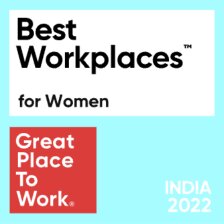Navigating the Maze of Volume Hiring: Strategies for Rapidly Scaling Your Workforce
Did you know that the manufacturing industry in the United States experienced a staggering growth of 17.2% in employment from 2021 to 2023? This rapid expansion brings both opportunities and challenges for manufacturers, especially when it comes to volume hiring. As demand for products continues to rise, companies are faced with the daunting task of scaling their workforce at an unprecedented pace. In this blog, we will explore the strategies that manufacturing businesses can employ to successfully navigate the maze of volume hiring, leveraging insightful statistics along the way.
To understand the magnitude of the challenge, a recent survey conducted by the National Association of Manufacturers (NAM) found that 82% of manufacturers reported a shortage of skilled labor as their biggest challenge. This is up from 74% in 2022 and is indicative of the growing severity of the labor shortage in the manufacturing industry.
Streamlining the Recruitment Process
Most large organizations have an established, structured recruitment process to source and hire candidates. However, the various steps involved in the process need to be expedited without compromising talent quality while trying to achieve volume hiring goals.
This is where smart technology can help employers speed up and streamline their recruitment process.
- Leveraging online channels for expanded sourcing: According to a recent survey by Deloitte, 92% of manufacturing executives believe that social media is an effective tool for recruiting talent. Online job portals and social media platforms have become vital tools for reaching a broader audience of potential candidates. For example, manufacturers can use social media campaigns to promote open positions, talk about company culture, and engage with potential candidates.
- Automating iterative processes with an ATS: By integrating tools like Applicant Tracking Systems (ATS), manufacturers can significantly reduce the time and effort involved in the hiring process. A modern ATS equipped with automation and AI/ML algorithms can help streamline iterative and manual processes. Tasks like resume screening, internal database searching, interview scheduling, and sending emails can be automated and accelerated. This can free up the recruitment team to focus on other tasks, such as sourcing candidates and conducting interviews.
- Enhancing candidate engagement with tech-driven interactions: Advanced technology can also help improve your candidate engagement, thereby reducing drop-offs. Utilizing automated, personalized interactions through emails, messaging applications, and other platforms can help boost engagement. It also helps recruiters in maintaining timely communication with pipelined candidates and creating a positive employer brand impression.
Why is building a strong employer brand important for manufacturers?
A study by LinkedIn reveals that 75% of job seekers consider an employer’s brand reputation before applying for a job. When hiring at scale, a strong employer brand helps you stand out from the competition and attract top talent. Candidates are more likely to apply to companies with a positive reputation and a compelling employer brand. It creates a positive perception of your organization, which increases the likelihood of candidates accepting job offers and staying with your company long-term.
- Define Your Employer Value Proposition (EVP): Identify and articulate what sets your organization apart as an employer. Define the unique value you offer to employees in terms of culture, benefits, career growth opportunities, work-life balance, and more. Your EVP should align with your company’s values, mission, and goals.
- Foster and highlight a positive company culture: Foster a positive and inclusive company culture that reflects your values. Encourage open communication, transparency, and collaboration among employees. Support employee well-being and provide opportunities for growth and development. Actively promote diversity, equity, and inclusion initiatives.
- Encourage current employees to become your brand ambassador: Encourage your employees to be brand ambassadors and advocates. Provide platforms for them to share their experiences and opinions about working at your organization. Encourage them to participate in industry events, conferences, or social media discussions to highlight the positive aspects of your company culture. You can also request them to provide feedback and reviews about their experiences on online channels like Glassdoor and Indeed.
Establish talent pipelines to rapidly fill open positions
Most organizations make the mistake of initiating the hiring process onlye when requirements arise. Talent pool building should be a continuous process that allows businesses to shorten the time to fill urgent roles.
- Leverage strategic partnerships to find skilled workers: Partnering with technical schools, community colleges, and vocational training centers helps in developing pipelines of skilled workers. The Manufacturing Institute reports that 82% of manufacturers have collaborated with educational institutions to develop tailored training programs. This is up from 71% in 2021 and is a clear indication that manufacturers are increasingly recognizing the importance of working with educational institutions to address the skills gap.
- Establish learning & development programs to upskill workers: One of the most effective ways to fill roles fast is to look inwards for candidates. Training current employees with relevant or la
- Tailored training programs can help manufacturers to ensure that their employees have the skills they need to be successful in the workplace. These programs can be developed in collaboration with educational institutions, or they can be developed in-house by the manufacturer.
Upskilling and Reskilling Programs for the Existing Workforce
Retaining valuable employees: By providing training opportunities and career advancement pathways, manufacturers can retain valuable employees and fill skill gaps internally. McKinsey’s report highlights that 43% of manufacturing executives see upskilling the current workforce as the most effective solution to address skill shortages.
Leveraging Data-Driven Recruitment Strategies
The power of data analysis: By analyzing recruitment data, companies can identify effective sourcing channels, optimize job descriptions, and refine candidate evaluation processes. SHRM reports that 48% of organizations are currently using or planning to use data analytics for recruitment activities.
Conclusion:
In conclusion, the manufacturing industry in the United States is experiencing rapid growth, requiring volume hiring strategies to meet expanding workforce demands. By leveraging technology, establishing a strong employer brand, collaborating with educational institutions, investing in upskilling programs, and adopting data-driven recruitment practices, manufacturers can navigate the maze of volume hiring successfully. These strategies, backed by insightful statistics, will enable companies to build scalable workforces capable of meeting the challenges and opportunities of the evolving manufacturing landscape. With the right approach, manufacturers can turn volume hiring into a competitive advantage, ensuring sustainable growth and success in the industry.








